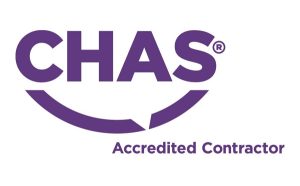In the beginning...
We lived outdoors – it was, after all, the natural habitat we had adapted to over millions of years.


Today we have heavily adapted our habitat and spend most of our time – around 90% of it – indoors. However, to function at our best – we need to experience some of the fine qualities of the outdoors, inside, as a fundamental requirement to support our physiology and maintain good health. Things like:
- Fresh Air
- Space
- Natural Light
In the run up to Education Estates we’ll be considering some of the facts, figures and key building design factors around health and productivity with respect to fresh air – starting with this first blog around the Science of Breathing.

Did you know...
We breathe around 13 pints of air a minute, totaling 4 million litres of air a year – that’s around 4.9 tonnes of air breathed each year, or enough to inflate around 60,000 lilos!
The purpose of breathing is to feed our lungs with good quality air from which we can extract oxygen to convert to energy in order to support critical body functions like digestion, muscle movement and cognitive function (amongst others).
The air we breathe in is typically composed of around 79% nitrogen, 21% oxygen and other gases including 0.04% carbon dioxide.
Once we’ve extracted the oxygen we need, our lungs expel air containing only 16.4% oxygen, and a lot more carbon dioxide – around 4.4% – that’s 100 times more than we breathed in.
Carbon dioxide is our waste product, and too much of it in the air we breathe can have a negative effect on our bodies.
In our natural habitat – fresh outside air is composed of around 400 parts per million (ppm) Carbon Dioxide …however, in enclosed spaces containing lots of living and breathing people – like offices or classrooms – the amount of carbon dioxide we are breathing out can accumulate and change the composition of the room air if not properly ventilated and exchanged for fresh air.
When exposed to too high levels of CO2, there are common negative effects on our bodies:
When CO2 levels are allowed to rise toward 2000ppm, the first signs are the onset of drowsiness and reduced cognitive performance. CO2 at 2,000–5,000 ppm is often associated with headaches, sleepiness, poor concentration, loss of attention, increased heart rate and the possibility of slight nausea. At 5,000 ppm this is strongly indicative of very poor air exchange and often associated with toxic levels of other substances in the air too.
Many studies have shown that CO2 levels in classrooms can often rise to 5000ppm or more if ventilation is not properly considered and controlled. Thankfully, modern design standards (BB101) stipulate that air quality in classrooms should be monitored and controlled so that sufficient outdoor air is provided in order that
- Mechanical Ventilation systems achieve a daily average CO2 concentration <1000 ppm and maximum concentration should not exceed 1500 ppm for more than 20 consecutive minutes each day.
- Natural Ventilation approaches must achieve a daily average CO2 concentration <1,500 ppm and the maximum concentration should not exceed 2,000 ppm for more than 20 consecutive minutes each day.
The goal for new buildings is that the ventilation solution should be designed to achieve a CO2 concentration of less than 1,200 ppm for the majority of the time (800 ppm above the outside CO2, taken as 400 ppm), and for existing buildings being refurbished CO2 levels should be less than 1,750ppm.
So how do we achieve this practically?…
Want to know more about the solutions for achieving this while considering comfort and the environment?
Follow us on LinkedIn or sign up to our newsletter to stay connected with our next blogs – where we’ll tackle subjects like:
The possibilities for todays buildings to support good air quality (and energy efficiency)
Kilpatrick Blane Services are delighted to be presenting at the upcoming Learning Spaces Scotland event in November – so pop by and see us or to discuss your existing or new school project, and best approaches to good air quality – drop us a line to info@kbscontrols.co.uk

















